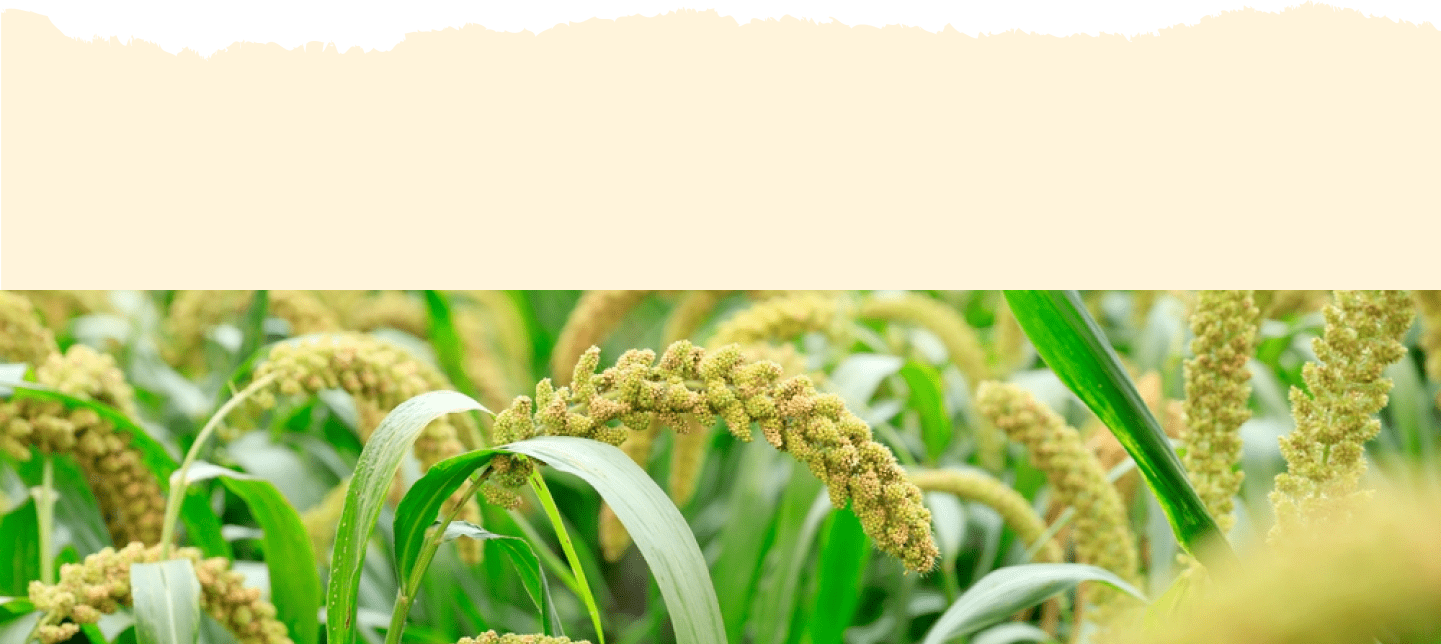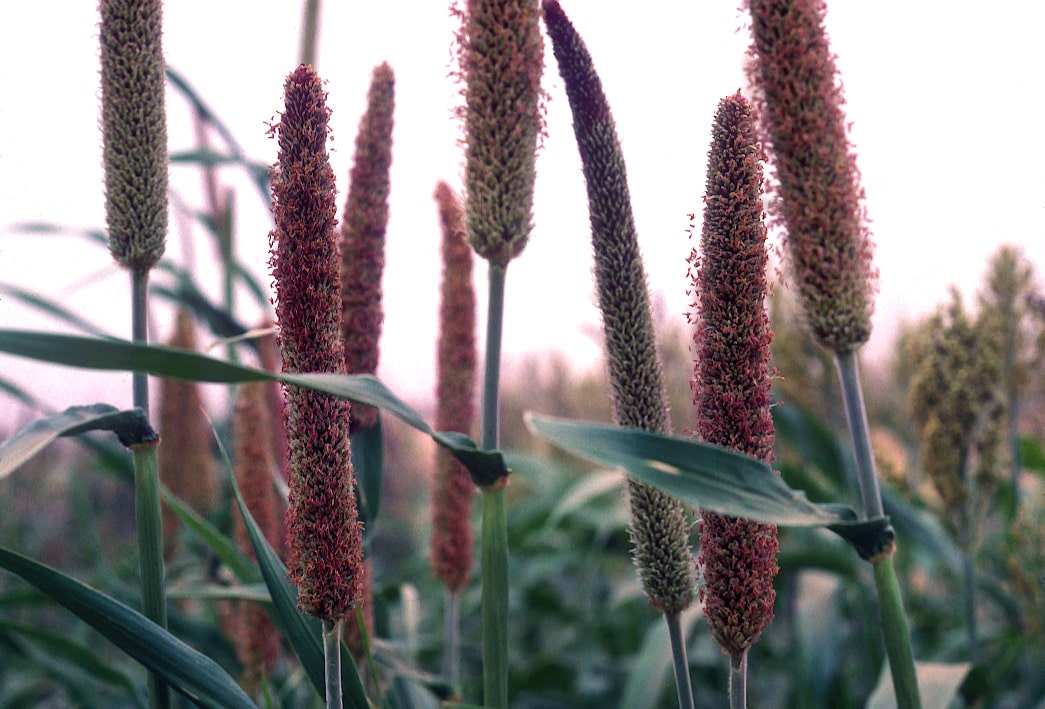At its 75th session in March 2021, the United Nations General Assembly declared 2023 the International Year of Millets (IYM 2023). This year aims to galvanise interest in millets among various stakeholders like farmers, the youth and civil society and push governments and policymakers to prioritise the production and trade in these cereals. The Food and Agriculture Organization of the United Nations (FAO) is the lead agency for celebrating the Year in collaboration with other relevant stakeholders.
“Millets are incredible ancestral crops with high nutritional value. Millets can play an important role and contribute to our collective efforts to empower smallholder farmers, achieve sustainable development, eliminate hunger, adapt to climate change, promote biodiversity, and transform agri-food systems,” said FAO Director-General Qu Dongyu at the opening ceremony of the International year of Millets 2023.
Millets: Nutrition and Health Benefits
Millets are ancient grains bursting with nutrition, yet they often go unnoticed. As whole grains, millets contain a much higher content of nourishing nutrients than the commonly used rice, wheat and corn. They are excellent sources of dietary fibre, protein, antioxidants, Iron, Calcium, Zinc and other essential nutrients. Most millets are rich in dietary fibres that can help increase satiety, improve bowel movement, and regulate blood sugar levels. These superfoods also offer a wide range of health benefits such as boosting heart health, improving digestion, and managing diabetes and weight.
According to the Indian Institute of Millet Research, other benefits of adding millets to diets include lower cholesterol and blood pressure levels, body detoxification, prevention of heart disease, type 2 diabetes, and gastrointestinal issues. These nutrient-rich grains have prebiotic properties and can be exceptional for the gut environment as well.
Two other qualities of millets that make them such a great addition to our diets are that millets have a lower glycemic index, and they are gluten-free. These two major characteristics make them suitable for those with gluten sensitivity and high blood sugar levels.
Types of Millets
Different types of millets are grown around the world based on the soil, climate and farming techniques. Examples of some millet types are pearl millet, foxtail millet, finger millet, sorghum, proso millet, kodo millet, little millet, barnyard millet etc.
The millet year 2023, hopes to push countries and citizens to grow and use such millet types to promote health, wellness, and dependence on natural and nutritious foods.
More than just nutrition: Millet as a crop
As crops, millets have been widely grown in Asia and Sub-Saharan Africa for centuries. They can grow on arid lands with minimal inputs and are resilient to changes in climate or other common crop diseases. The strength and low maintenance of millets as crops make them an ideal solution for countries to increase self-sufficiency and reduce reliance on imported cereal grains. Additionally, millets can improve soil fertility, increasing farmers’ yield and boosting their income.
Greater millet production can support the livelihoods of smallholder farmers and can provide decent jobs for women and youth. The revenue created can boost economic growth. With the possibility of a healthy cereal alternative with millet, the risks associated with production shocks can be mitigated.
Millets for Sustainable Development
Not only are these super-cereals nutritional powerhouses and robust crops, but they also help promote sustainability. The International Millet Year 2023 and the push towards increasing millet production will contribute to the 2030 Agenda for Sustainable Development.
The Food and Agriculture Organization of the United Nations (FAO) Director-General Qu Dongyu also added, “This International Year of Millets is a timely reminder of this important crop. It provides a unique opportunity to raise awareness of and to direct policy attention to the nutritional and health benefits of millet consumption, the suitability of millets for cultivation under adverse and changing climatic conditions and creating sustainable and innovative market opportunities for many countries around the world for millets to benefit farmers and consumers globally.”
The Role of the Indian Government in Making IYM 2023
India presented the proposal for the International Year and is the chair of the Year’s Steering Committee. The idea was to bring back its former glory to benefit the farmers, consumers and the climate. Indian Minister of State for Agriculture, Shobha Karandlaje, delivered a message from the Indian Prime Minister Narendra Modi. In an effort to promote millets, the Government of India also took up several initiatives to put the nutri-cereal forward.
#IYM2023 is an opportunity to raise awareness of, and direct policy attention to the nutritional and health benefits of millets and their suitability for cultivation under adverse and changing climatic conditions. The International Year of Millets 2023 promotes the sustainable production of millets while highlighting their potential to provide new sustainable market opportunities for producers and consumers.
International Year Of Millets 2023
The United Nations General Assembly at its 75th session in March 2021 declared 2023 the International Year of Millets (IYM 2023). FAO is the lead agency for celebrating the Year in collaboration with other relevant stakeholders. Millets can grow on arid lands with minimal inputs and are resilient to changes in climate. They are therefore an ideal solution for countries to increase self-sufficiency and reduce reliance on imported cereal grains.
#IYM2023 will be an opportunity to raise awareness of, and direct policy attention to the nutritional and health benefits of millets and their suitability for cultivation under adverse and changing climatic conditions. The Year will also promote the sustainable production of millets, while highlighting their potential to provide new sustainable market opportunities for producers and consumers.
“Millets are incredible ancestral crops with high nutritional value. Millets can play an important role and contribute to our collective efforts to empower smallholder farmers, achieve sustainable development, eliminate hunger, adapt to climate change, promote biodiversity, and transform agrifood systems,” FAO Director-General QU Dongyu told participants at the hybrid event.
Greater millet production can support the livelihoods of smallholder farmers and can provide decent jobs for women and youth. The revenue created can boost economic growth. With the possibility of a health cereal alternative with millets, the risks associated with production shocks can be mitigated.
The IYM 2023 and the push towards increasing millet production will contribute to the 2030 Agenda for Sustainable Development.
“This International Year is a timely reminder of this important crop. And it provides a unique opportunity to raise awareness of, and to direct policy attention to the nutritional and health benefits of millet consumption, the suitability of millets for cultivation under adverse and changing climatic conditions and creating sustainable and innovative market opportunities for many countries around the work for millets to benefit farmers and consumers globally,” Director-General Qu told the audience.
Deputy Secretary-General of the United Nations, Amina Mohammed delivered a video message during the opening ceremony. Indian Minister of State for Agriculture, Shobha Karandlaje, delivered a message from the Indian Prime Minister Narendra Modi. India presented the proposal for the International Year and is the chair of the Year’s Steering Committee.
IYM 2023 hopes to galvanise interest in millets among various stakeholders like farmers, the youth and civil society and push governments and policy makers to priorities the production and trade in these cereals.

Millets and The 2030 Agenda
The International Year of Millets 2023 contributes to the 2030 Agenda for Sustainable Development and the Sustainable Development Goals (SDGs)

Six Reasons To Bring Millets To The Market!
Rich in heritage and full of potential, millets are a sustainable, nutritious and under-valued food source.
- Millets are there when others are not.
There is an ever-growing global population that needs sufficient and healthy food amidst climate emergencies and depleting natural resources. Millets can be part of the solution. These grains can survive harsh climate conditions, offering solutions to food scarcity. Because they are often the only crops that can be harvested in dry seasons, millets can be a vital food source for populations vulnerable to food insecurity.
- Millets can contribute to a healthy diet.
Millets provide antioxidants, minerals and protein. As whole grains, each millet variety also offers different types and amounts of fibre, which play a role in regulating bowel function, blood sugar and lipids.
Furthermore, millets are gluten-free with a low-glycaemic index making them a great food option for those with celiac disease or gluten intolerance, high-blood sugar or diabetes. They can also be a cost-effective source of iron. Incorporating millets in our diets can provide us with nutritious and healthy alternatives to the usual refined grains in the global market. Start exploring some millet recipes, such as this finger millet pancakes option, to revamp your diet! - Millets are climate-resilient.
Millets are resistant to drought and tolerant to crop diseases and pests, allowing them to survive in adverse climatic conditions.
Because millets can be grown with minimal inputs and maintenance and can adapt to climate shocks, expanding production of millets can transform local agrifood systems to be more efficient, resilient and inclusive. The ability of millets to grow in poor, degraded soils can also provide land cover in arid areas, reducing soil degradation and supporting biodiversity. - Millets offer promising livelihood opportunities for small-scale farmers.
As other cereals have become widespread, dietary preferences have shifted and led to a decline in the production and demand for millets. By encouraging the consumption and production of these underutilized crops, we can help millets regain market share and create additional opportunities for small-scale farmers.
- Millets’ trade can improve the diversity of the global food system.
Currently, millets account for less than three percent of the global grains trade. When sudden shocks affect the foodgrain market, millets can provide a valuable alternative to typically traded grains. This added diversity can improve the resilience of the global trade markets and mitigate our reliance on other grains.
- Millets can be used in many innovative ways.
The genetic diversity of millets lends itself to many diverse and innovate applications of millets in areas such as therapeutics and pharmaceuticals. Used innovatively, millets offer even greater market opportunities for regional and international trade.







